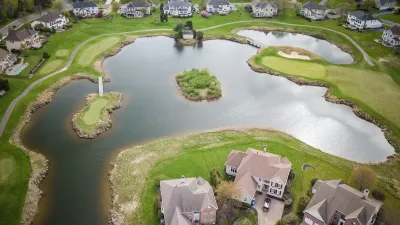Fair housing has taken national stage in recent weeks—a Supreme Court ruling and a Department of Housing and Urban Development rule now define fair housing. The New Jersey Supreme Court has also had its say on the subject, and cities are catching up.
"When it comes to the question of towns building their 'fair share' of affordable housing, the New Jersey Supreme Court could not have been clearer than my son is when arguing for fair cookie-distribution," writes Serena Rice in an op-ed for The Star-Ledger. "In the most recent Mount Laurel decision, the court restated in the strongest terms that New Jersey has a clear commitment to affordable housing, and that promise needs to be fulfilled now." The ruling earlier this year reinforced the so-called "Mount Laurel doctrine," which states that munipalities are obligated to provide a fair share of affordable housing.
Controversy over how some states calculate their municipal obligations to develop affordable housing preceded the Supreme Court decision. Rice pins the blame for the practice of undercounting municipal obligations on Robert Burchell, co-director of the Center for Urban Policy Research at Rutgers University. In a separate article, Colleen O'Dea reports on Burchell's role in the controversy leading up to the decision as well as his ongoing roll as a contractor in cities working to meet the guidelines produced by the Supreme Court ruling.
The ruling became effective last month, allowing a 30-day period for municipalities to seek approval for housing plans from the court. In the op-ed, Rice expresses concern that cities will continue to undercount and resist the mandate to provide their fair share of affordable housing.
FULL STORY: N.J. towns must do more to comply with affordable housing requirements

Alabama: Trump Terminates Settlements for Black Communities Harmed By Raw Sewage
Trump deemed the landmark civil rights agreement “illegal DEI and environmental justice policy.”

Planetizen Federal Action Tracker
A weekly monitor of how Trump’s orders and actions are impacting planners and planning in America.

The 120 Year Old Tiny Home Villages That Sheltered San Francisco’s Earthquake Refugees
More than a century ago, San Francisco mobilized to house thousands of residents displaced by the 1906 earthquake. Could their strategy offer a model for the present?

Indy Neighborhood Group Builds Temporary Multi-Use Path
Community members, aided in part by funding from the city, repurposed a vehicle lane to create a protected bike and pedestrian path for the summer season.

Congestion Pricing Drops Holland Tunnel Delays by 65 Percent
New York City’s contentious tolling program has yielded improved traffic and roughly $100 million in revenue for the MTA.

In Both Crashes and Crime, Public Transportation is Far Safer than Driving
Contrary to popular assumptions, public transportation has far lower crash and crime rates than automobile travel. For safer communities, improve and encourage transit travel.
Urban Design for Planners 1: Software Tools
This six-course series explores essential urban design concepts using open source software and equips planners with the tools they need to participate fully in the urban design process.
Planning for Universal Design
Learn the tools for implementing Universal Design in planning regulations.
Clanton & Associates, Inc.
Jessamine County Fiscal Court
Institute for Housing and Urban Development Studies (IHS)
City of Grandview
Harvard GSD Executive Education
Toledo-Lucas County Plan Commissions
Salt Lake City
NYU Wagner Graduate School of Public Service





























